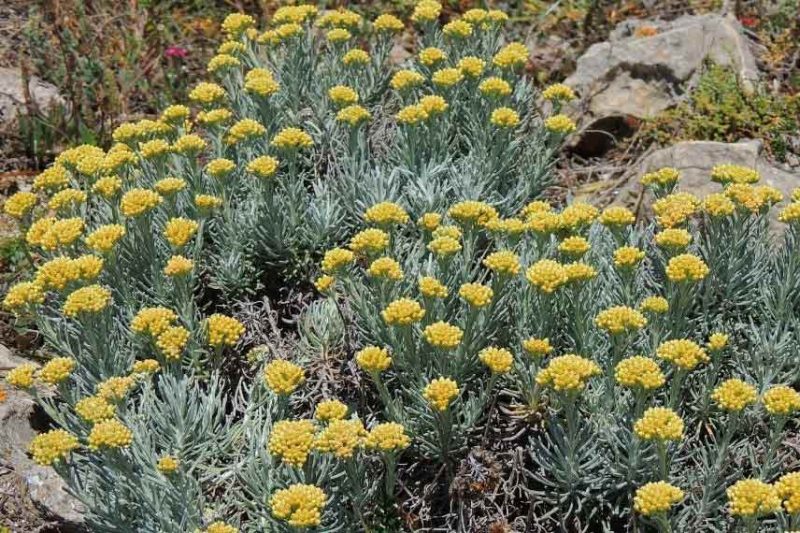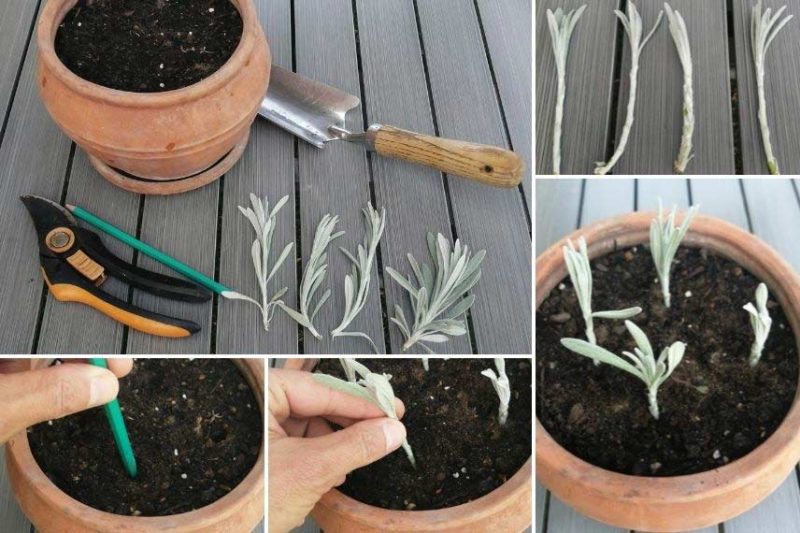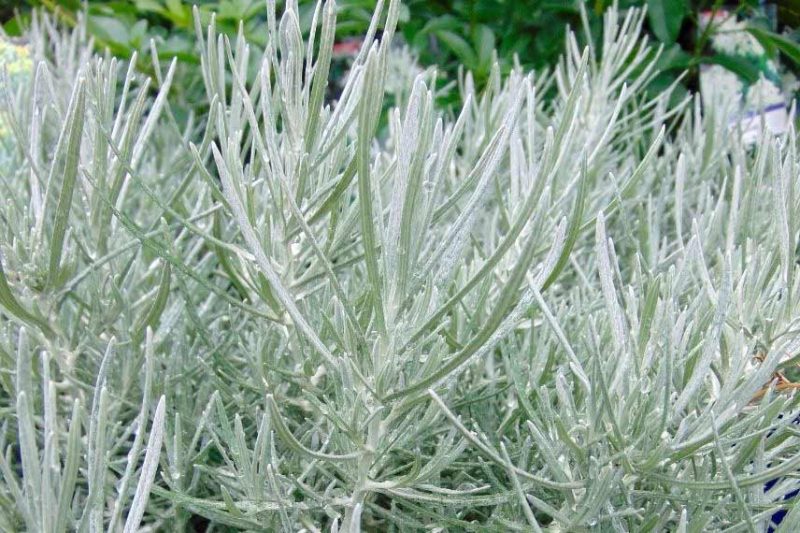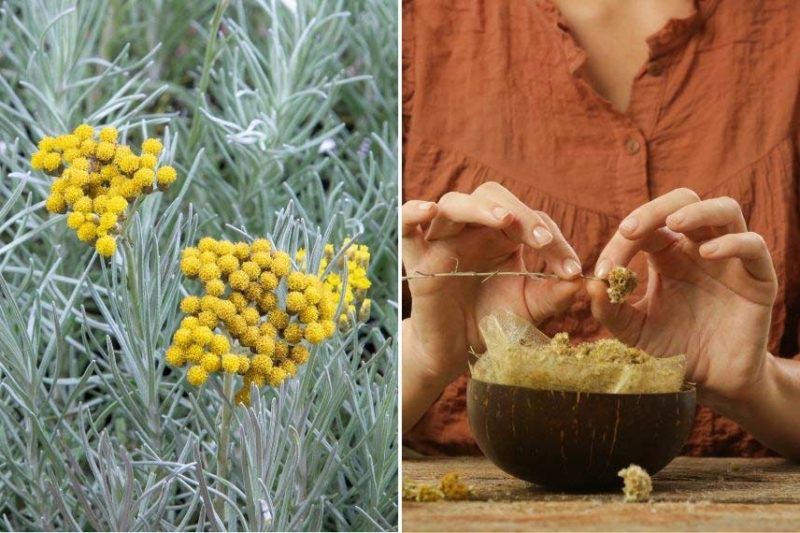The Helichrysum, also known as "Everlasting" or "Curry Plant", is a small Mediterranean perennial. There are also annual varieties: the Everlastings with bracts (Helichrysum bracteatum).
Helichrysum is prized for its colourful summer flowering, as well as its grey, silvery, evergreen and aromatic foliage in perennial varieties. Easy to grow and undemanding, Everlastings will thrive in full sun in dry, well-drained soil, even poor and stony soil. They are also easy to propagate, whether by cutting, division or sowing.
Discover our tips for successfully propagating Helichrysum and obtaining new young plants simply and for free.

The Everlasting in its natural Mediterranean habitat
To learn all about growing Everlasting, read our article: "Helichrysum, curry plant, everlastings: sowing, planting, care".
Taking cuttings from Helichrysum
Propagation by cuttings is the most effective technique for multiplying perennial Helichrysum (Helichrysum italicum, Helichrysum stoechas and Helichrysum petiolare). It allows you to create an exact clone of the original plant, called the "mother plant". The new young plant will therefore have the same genetic characteristics as the plant it comes from.
Easy to succeed with, accessible even to beginner gardeners, propagation by cuttings will allow you to quickly and economically obtain several new Everlasting plants.
Required materials
- A bucket or pot with drainage holes (conventional plastic or biodegradable)
- A spray bottle for gentle watering
- A pencil or stick to prepare the planting hole
- A pair of secateurs with an acute blade, previously disinfected to avoid any risk of disease transmission
- A light substrate: sowing and potting compost, Mediterranean plant compost or a 50/50 mix of universal compost and sand
When to do it?
Take cuttings in summer, from July to September, from semi-woody stems or semi-hardwood. This means the shoots are no longer very young (what we call green or herbaceous stems), but are still somewhat flexible and not completely transformed into hard wood.
Cuttings taken in late spring (May-June) from that year's shoots can also work, but generally have less chance of success.
How to take Helichrysum cuttings?
- Using the secateurs, take one or more non-flowering stems from the mother plant, about 10 cm long
- Remove the leaves from about the bottom 2/3 of the stem (corresponding to the part that will be buried): this is called stripping.
- Fill the bucket or pot with substrate.
- Moisten the substrate with the spray bottle, ideally with rainwater.
- Using the pencil, make one or more planting holes, about 5 cm deep.
- Insert the cutting(s).
- Gently firm with your fingers to keep the stem upright and remove air pockets.
- Place the bucket or pot in a warm, sheltered spot out of wind, rain and direct sunlight.

Preparing the materials and cutting stems for propagation, stripping the stems and planting in the substrate
The substrate should be kept moist until rooting occurs, after about 3 to 4 weeks. New shoots should then appear, proof that the cutting has taken.
To increase your chances of success, you can also try propagation under cover. To do this, place a transparent bag (like a freezer bag), a cloche or a plastic bottle with the base cut off directly over the bucket. This technique recreates warm, humid conditions favourable to rooting, like in a mini greenhouse. Just remember to ventilate occasionally to remove excess moisture and prevent disease development.
The young propagated plants can then be moved to a bright location. They should be kept sheltered throughout the winter. Watering should then be reduced: always wait until the substrate is dry on the surface.
In spring, once the last frosts have passed, transplant the Helichrysum cuttings either into a pot at least 30 to 40 cm in diameter, or directly into the ground.
Want to learn more about propagation by cuttings? Read Alexandra's article: "Propagation by cuttings: all about the different techniques and our advice".
Dividing Helichrysum
Division involves separating the root system of a plant into one or more parts. The separated plants already have their own roots, promoting recovery. Division is done on plants that have been in place for several years (3 or 4 years on average). It also helps rejuvenate plants that are starting to take up too much space or become bare.
Note that this technique has less chance of success than propagation by cuttings. Indeed, many Mediterranean plants do not like being moved once established. This is the case, for example, with lavender, rosemary or thyme. Moving is more traumatic for them than for other plants, limiting the chances of recovery. Everlasting can therefore have difficulty recovering after division.

Division also helps rejuvenate Everlasting clumps and obtain new plants for the garden
Required materials
- A spade or digging fork
- A knife with an acute blade, previously disinfected to avoid any risk of disease transmission
- A light substrate: sowing and potting compost, Mediterranean plant compost or a 50/50 mix of universal compost and sand
When to do it?
Perennial Helichrysum are divided in spring, once the last frosts have passed.
Do not divide in autumn, as the damper soil and environment would tend to further weaken the roots.
How to divide Helichrysum?
If you plan to grow one of the divided parts in a pot, prepare a container with drainage holes about 30 to 40 cm in diameter, filled with substrate and pre-moistened. If, on the other hand, you prefer to grow directly in the ground, prepare the area in advance: weed, remove stones, work the soil if necessary by lightening it and adding substrate.
- Using the spade, dig up the plant by lifting it gently with a levering motion, trying to break as few roots as possible.
- Using the knife, separate the rootball into two parts.
- Replant one half in the original spot and the other half in a pot or in the ground.
- Water generously to promote recovery, then regularly for the next 3 weeks to encourage root development.
Sowing perennial or annual Helichrysum
Sowing is the only way to propagate annual varieties of Everlastings with bracts (Helichrysum bracteatum). But this propagation method also works easily for perennial varieties.
Sowing is the most natural way to propagate a plant. While it requires a little more patience, it produces strong new plants and provides the satisfaction of seeing a Helichrysum grow from seed to mature plant.
Required materials
- A packet of seeds (available from garden centres, specialist shops or online) or seeds harvested from the garden the previous season
- For sowing under cover, several buckets with drainage holes or a seed tray
- A spray bottle for gentle watering
- A light substrate: sowing and potting compost, Mediterranean plant compost or a 50/50 mix of universal compost and sand
When to do it?
Sowing in situ, directly in the ground, is done in spring. Wait until temperatures have warmed (above about 12°C) and the last frosts have passed, i.e. April or May depending on your region. Note that flowering of Everlastings with bracts may be delayed until summer due to later sowing.
Sowing under cover can be brought forward to February-March. The ideal germination temperature is around 16°C to 20°C.

Everlasting seeds can be harvested directly from the garden
How to sow Helichrysum?
Under cover
- Fill buckets or seed tray with substrate.
- Sow the seeds on the surface: a small pinch per bucket, several pinches in the seed tray, fairly scattered.
- Cover lightly with compost, without burying the seeds too deeply.
- Moisten generously with the spray bottle.
- Place in a warm, bright location.
- Keep moist until germination and seedling emergence, usually within 2 to 3 weeks.
- When the seedlings are about 5 cm tall and starting to get crowded, pot them on into individual buckets.
- Plant out in the ground in late spring.
In the ground
- Prepare the area to be sown by weeding, removing any stones and lightening with substrate.
- Sow the seeds broadcast (sprinkling the seeds evenly without overcrowding).
- Cover lightly with compost, without burying the seeds too deeply.
- Moisten generously with the spray bottle.
- Keep moist until germination and seedling emergence.
- Thin out, keeping only the strongest plants, spaced about 30 to 40 cm apart (the weaker plants can be potted up into individual buckets or planted out in another area).
Want to learn more about sowing? Read Virginie's article "Sowing annual seeds: how to succeed, in the ground or in a seed tray" or Alexandra's article "Successful sowing of perennial plants".


































![[plant id="helichrysum"]Multiply Helichrysum by division in spring. Dig up the plant and separate the root clumps to create new plants. Replant them in well-draining soil and water thoroughly. propagating sowing dividing everlasting strawflower](https://en.promessedefleurs.eu/blogwp/wp-content/uploads/2022/04/1-1.jpg)
Comments